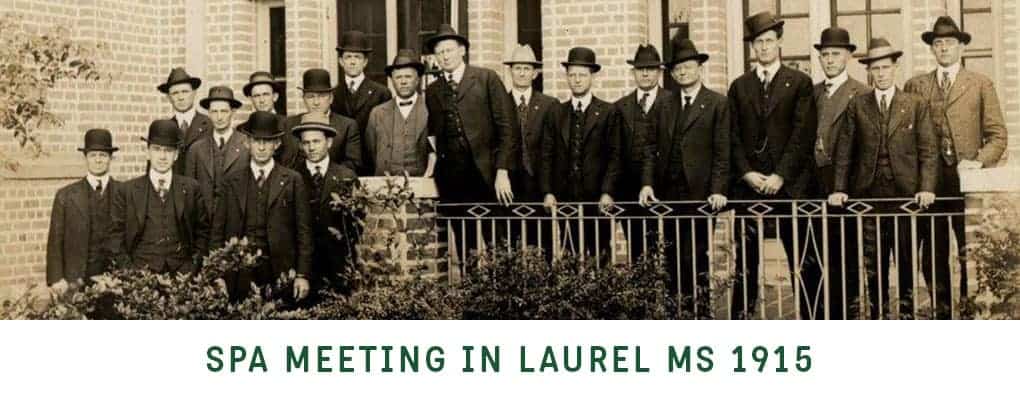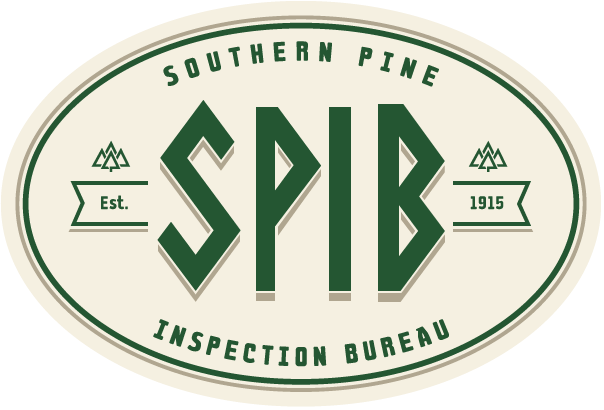
Lumber Grade-Marking History: 1915
About the History of Lumber Grade Marking
SPIB has been in the process of archiving some of its historical documents. In that process, we discovered a rare and treasured story about the history of grade marking southern pine. It begins in 1883 and leads us up to 1940 when SPIB was created. W.D. Durland prepared this document from the files of the Southern Pine Association. We don’t know a lot about Durland other than that he had other publications on lumber and timber in the early part of the 19th century. Some research suggests he was employed by the Forest Service and involved with the Yale School of Forestry. The story is very interesting and if you are a history buff you will really enjoy reading it in a series of blogs that SPIB plans to share with the industry beginning with the one we have for you today. Enjoy the read!
– Steve Singleton, SPIB President
Introduction
1915 was a year in which the world changed in many ways, all of which are worth exploring. World War I was still making its indelible mark on the globe. In January, a new altitude record was set in aviation when a fixed-wing aircraft hit 11,690 feet for the first time. In December, the one millionth Ford automobile rolled off an assembly line in Detroit, Michigan. Alfred Wegener published his theory of Pangaea. The list goes on and on.
And in late February, the first annual meeting of the Southern Pine Association was held in beautiful New Orleans, Louisiana.
It was an event that would confirm the sound status of the organization as a whole, but it was also one that would begin the type of positive ripple effect that would last a generation.
In this section, we will discuss in detail the important role that the Southern Pine Association played – both in its era and in its industry – the effects of which are still being felt today. We’ll discuss the need for lumber-grade uniformity among all mills for selling, shipping, and even advertising purposes. We’ll discuss the density rule and the branding of timbers, which were then considered to be almost incredibly progressive ideas. We’ll also discuss the hurdles that needed to be overcome, like the special interests groups in different regions that were fighting these advancements every step of the way.
We hope you find the insight contained in this section every bit as insightful as it is meaningful, as it’s a critical chapter in a story that the industry would not be the same without.
1915
The first annual meeting of the Southern Pine Association, February 23 and 24, 1916, at New Orleans, affirmed to the subscribers the sound status of the organization. In contrast to the years prior to 1915, this condition was not only one of satisfaction but of commendation as well. Internal or external suspicion, criticism and complaint, a development of the Missouri Ouster Suit, July 30, 1908 – December 24, 1913, and which occasioned liquidation of the Yellow Pine Manufacturers Association, had been eliminated. Constructive work was substituted for disturbance and uncertainty. A competent Inspection Service guided and improved the application of lumber rules and grade specifications – to attain uniformity of grade in lumber manufacture. It was acknowledged that without standard grade uniformity, intelligently described and with reputable support, the lumber markets could become elements of disgust and lost to manufacturers. Subscribers were requested to give liberal assistance and cooperation to the grading rules inspectors in order that the service would produce the aims sought – lumber grade uniformity among all mills for selling, shipping, and advertising purposes. A Grading Committee supervised the activities of the grade inspectors to improve the service. The Gulf Coast Classification for Export Grades, and the Density Rule for Timbers, both authoritatively endorsed, were adopted. Size changes to eliminate useless items and improve the uniformity of useful ones were made. A Standard Moulding Book showing size and pattern was adopted. Dry kiln practice for lumber was studied and also the particular requirements of the U.S. Navy. Care and maintenance of the way specifications were considered jointly with the railroads and emphasis was given to a more specific grade rule for better uniformity in No. 2 and No. 3 boards. Specifications for yellow pine shingles were adopted. An efficiency card system for graders and inspectors working at subscriber mills was put into effect. Standard yellow pine rules for manufacturing were printed in Spanish for South American trade. An instructor of grades was employed to work in subscriber mills with the inspectors for further improvement of grade uniformity. Claim records were systematized to expedite the analysis of all failures in the manufacturing and shipping of yellow pine lumber. Sizes and weights were studied and consistency in grade application was improved.
The branding of all timbers and lumber by the manufacturer with an association mark, before the material was shipped, was recommended. A resolution requesting the proper branding of all timbers shipped by subscribers so that they could be identified at destination was adopted by the Southern Pine Association. The subject of lumber branding was recognized as being one of the most important before southern yellow pine manufacturers, not only for timbers, but all classes and items of lumber shipped. Lumber brands and mill identification were considered essential, Southern Pine Association April 29, 1915, because a strong prejudice had developed, generally, against the use of yellow pine lumber and structural timbers through the substitution of species. Many of the structural timbers shipped by manufacturers would not carry the loads or resist decay. Contractors, builders, and consumers were shifting to other kinds of building materials – concrete and steel were being specified by reason of the actions of unscrupulous distributors of lumber.
The density rule and the branding of timbers, then considered two outstanding progressive ideas, were opposed by several business interests in different sections of the region. Their efforts, however, were unsuccessful because of apparent selfish motives, directed largely, either to (1) attracting the consumer market to particular originating localities and products, by individual private markings, or (2) no markings at all the prevent identification after shipment. The thought of a brand or trademark with a symbol or number representing the mill using the brand originated at this time by and from within the Southern Pine Association, following in the wake of constructive work to standardize sizes and establish uniformity in lumber grades produced by industry’s mill units. The idea to brand southern yellow pine with an official representative symbol or trademark suggested the principles of certified lumber. The hammer or stamp method of applying the brand by hitting lumber was not considered satisfactory because the mark could be effaced; furthermore, branding practice to be successful had to be done on a quantity basis. Machines that would imprint the trademark into the ends of lumber desired. Costs of brand application were thought to be one quarter to one half of a cent per thousand feet. Investigation and trial subsequently condemned the few devices then available. Trademarking and branding – a guarantee of quality and uniformity of grade made effective through a competent grade inspection service – furnished perfect identification for lumber from mill to consumer and constituted certification of quality lumber to the buyer – retailers, wholesalers, and the general public.
The Lumber Trust bugbear was removed from public attention through a three-year presentation of facts on costs and realization values, before the Federal Trade Commission – it was evident that there never was and did not exist a Lumber Trust. The privilege of entering into agreements within the industry on the basis of fair practice permitting reasonable cooperation was requested of the Federal Trade Commission with encouraging hope for constructive developments in this regard.
References
Lumber Awakes. Official Report of the First Meeting of the Subscribers to the Southern Pine Association, Grunewald Hotel, New Orleans, La., February 23 and 24, 1915.
Branding Committee. File 1915. Fifty Years in the Southern Pine Industry. James Boyd. Southern Lumberman.
Part I. December 16, 1931, Part II. January 1, 1932. Southern Pine Service. James Boyd. November 2, 1939. Manuscript.
